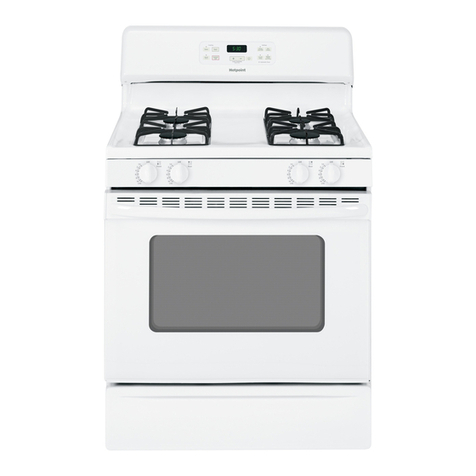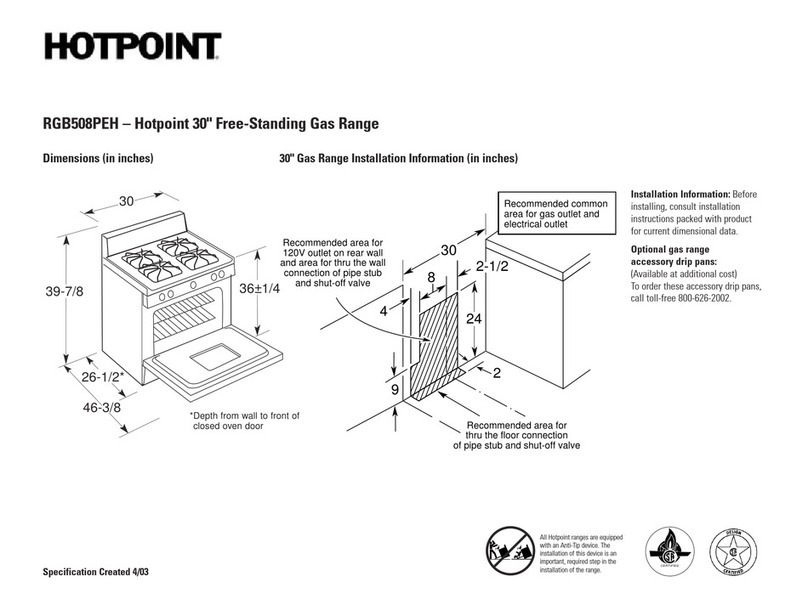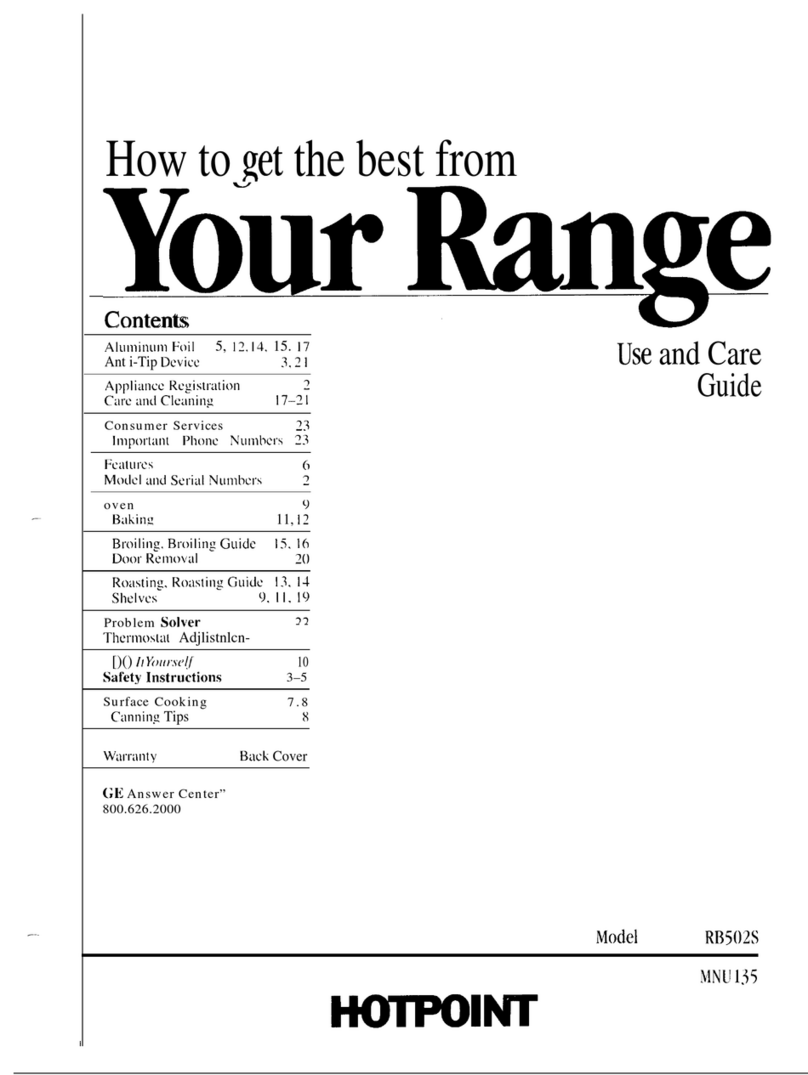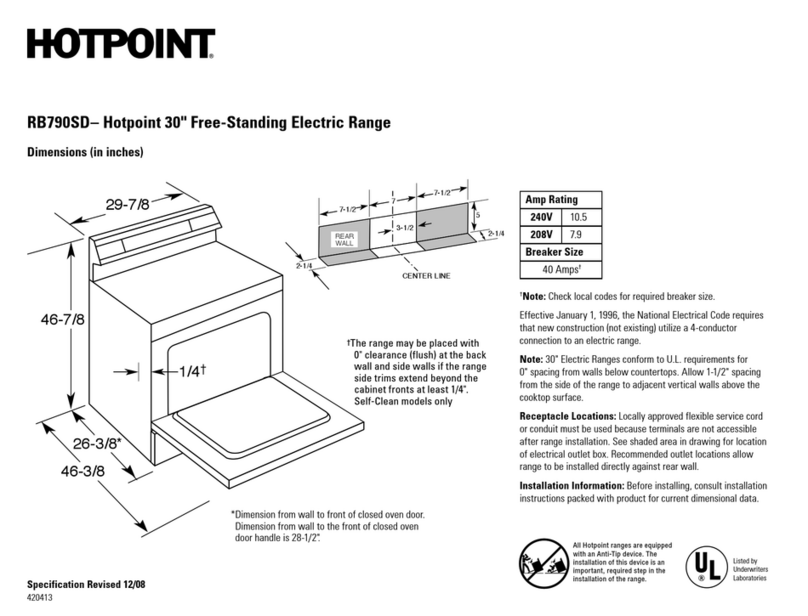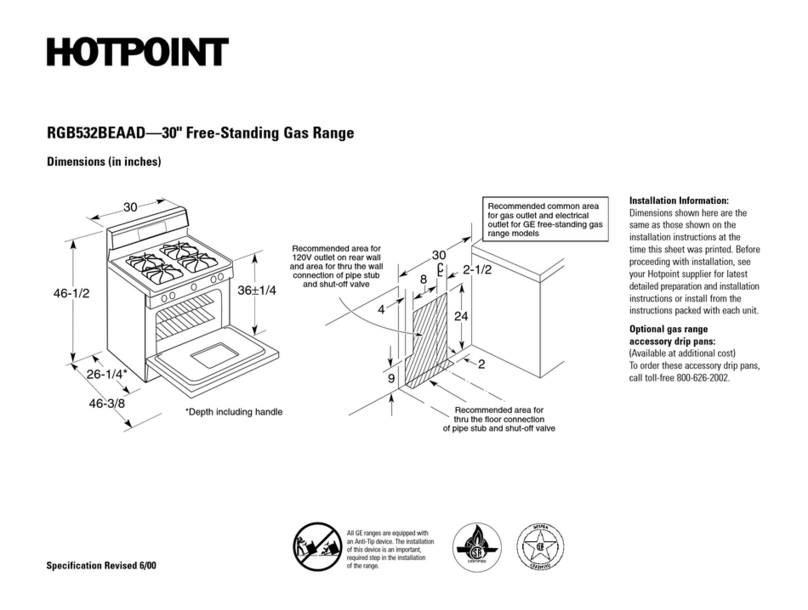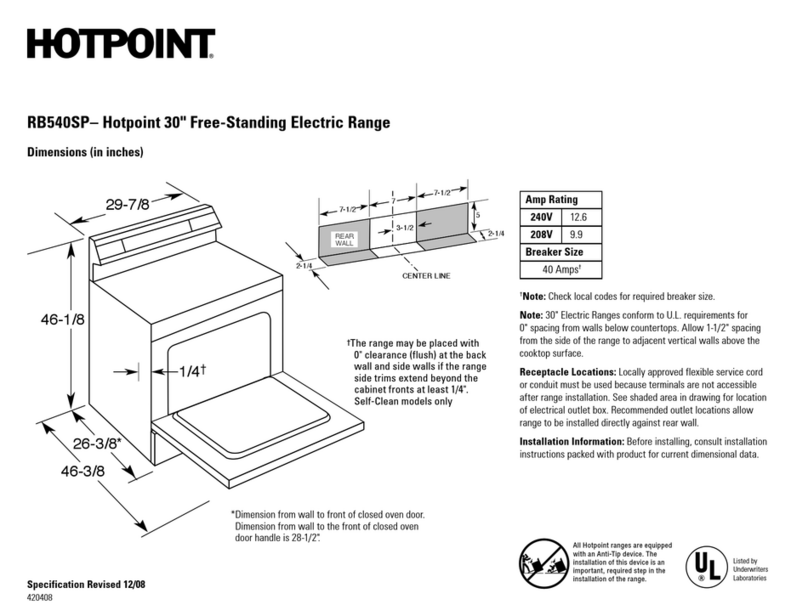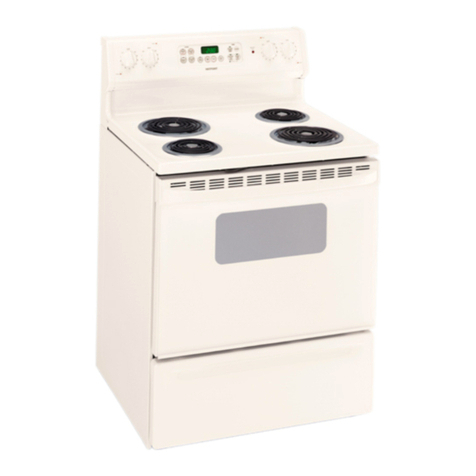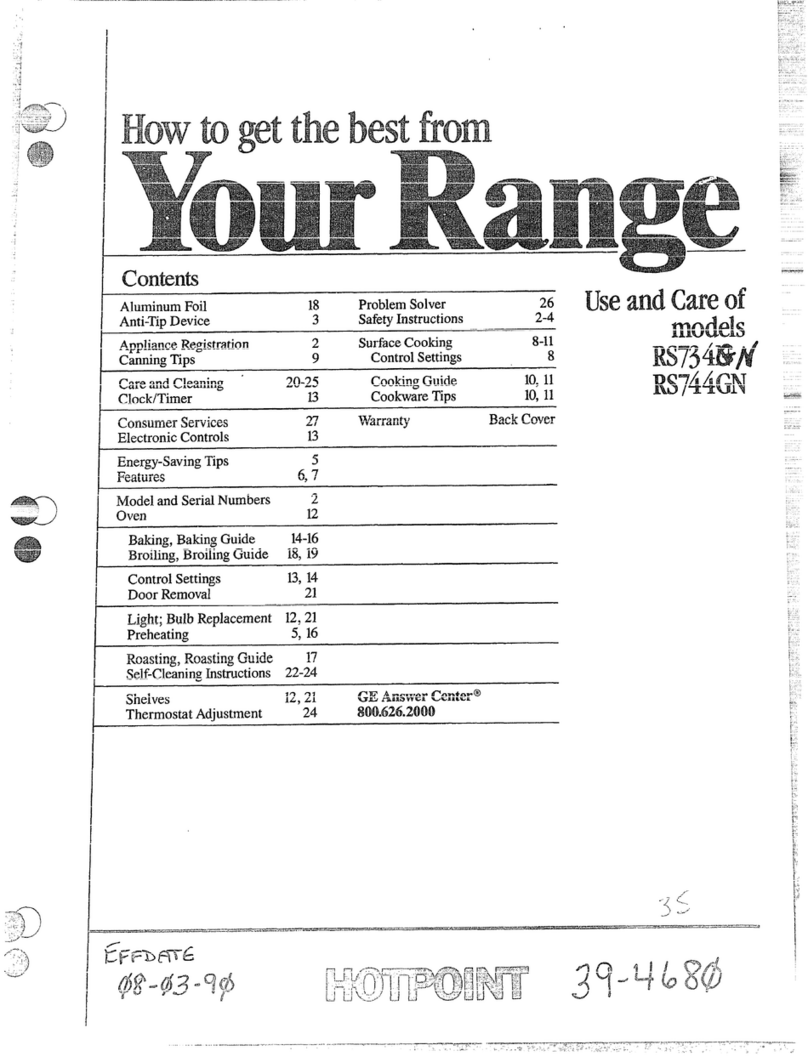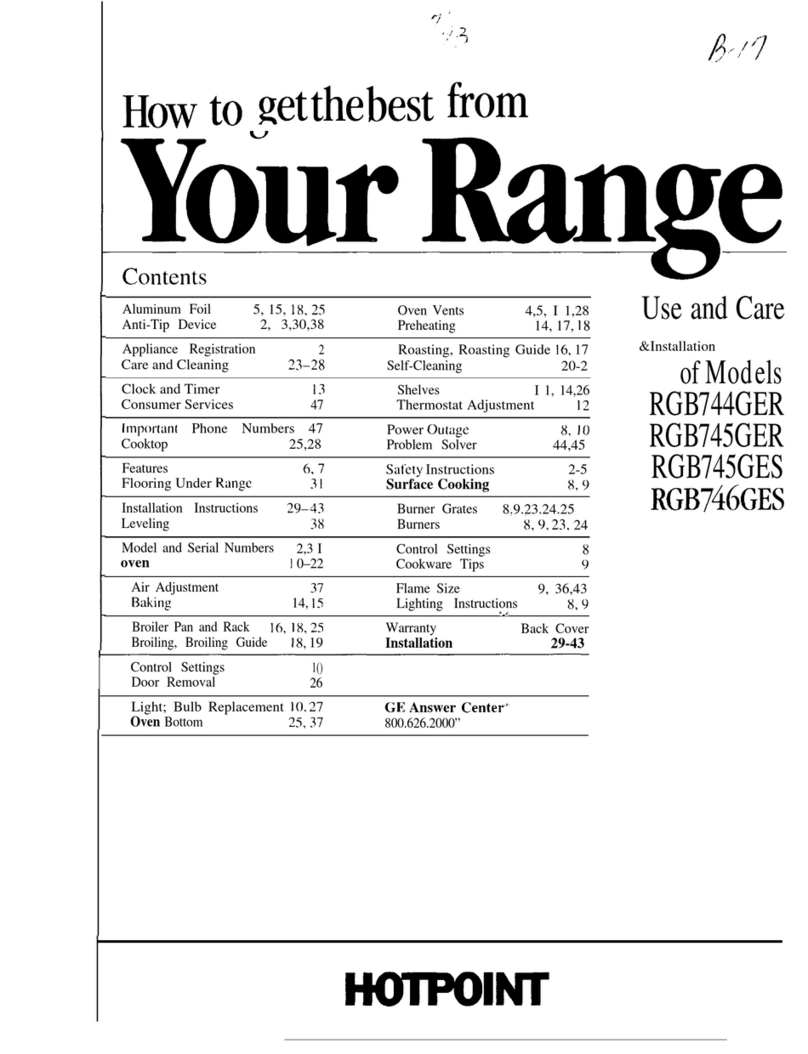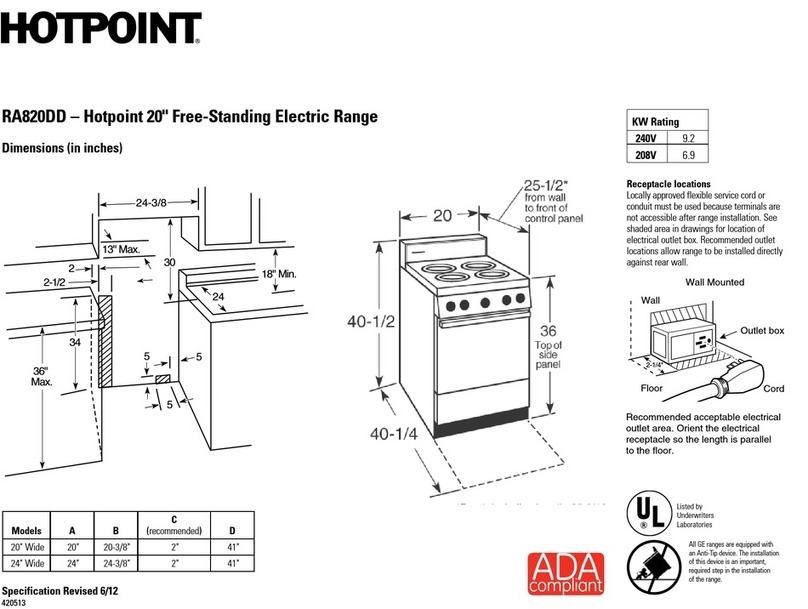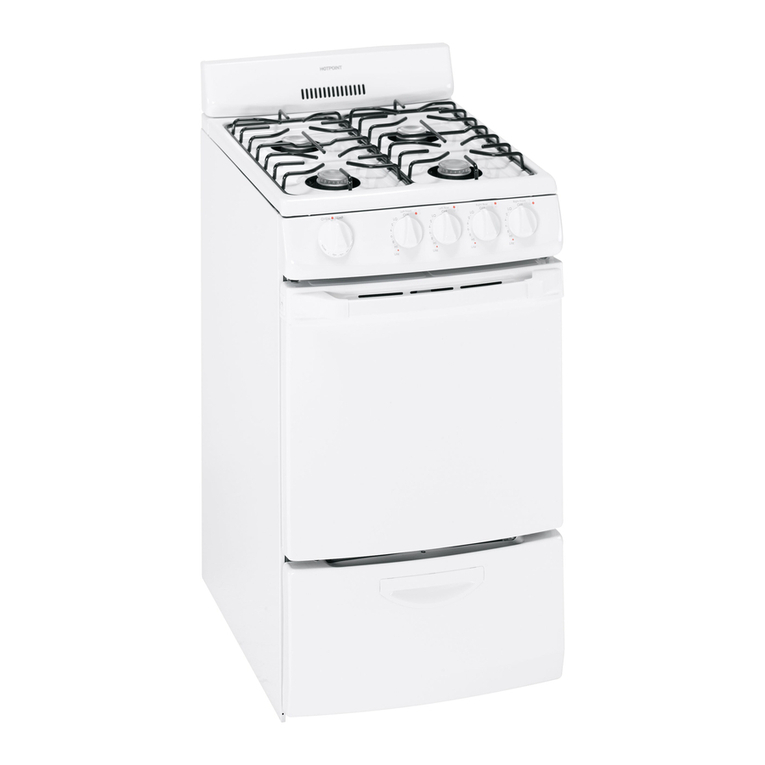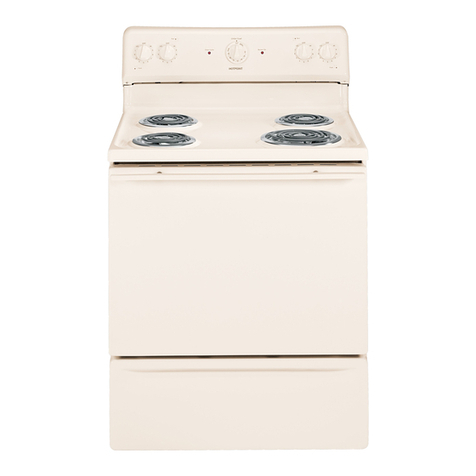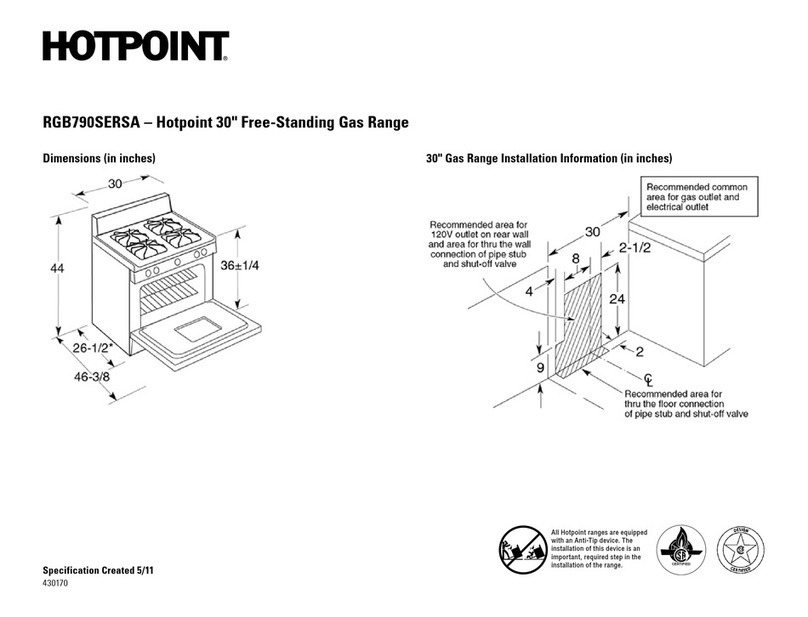
IMPORTANT SAFETY INSTRUCTIONS
(continued)
• Do not touch the surface units, the heating
elements or the interior surface of the oven.
These surfaces may be hot enough to burn even
though they are dark in color. During and after use,
do not touch, or let clothing or other flammable
materials contact the surface units, the areas
nearby the surface units or any interior area of the
oven; allow sufficient time for cooling, first.
Potentially hot surfaces include the cooktop, areas
facing the cooktop, oven vent opening, surfaces
near the opening, crevices around the oven door,
the edges of the door window and metal trim parts
above the door.
Remember: The inside surface of the oven may
be hot when the door is opened.
•Do not use water on grease fires.
Never pick up a flaming pan. Turn
the controls off. Smother a flaming pan
on a surface unit by covering the pan completely
with a well-fitting lid, cookie sheet or flat tray. Use
a multi-purpose dry chemical or foam-type fire
extinguisher.
Flaming grease outside a pan can be put out by
covering it with baking soda or, if available, by
using a multi-purpose dry chemical or foam-type
fire extinguisher.
Flame in the oven can be smothered completely
by closing the oven door and turning the oven off
or by using a multi-purpose dry chemical or foam-
type fire extinguisher.
• When cooking pork, follow the directions exactly
and always cook the meat to an internal temperature
of at least 170°F. This assures that, in the remote
possibility that trichina may be present in the meat,
it will be killed and the meat will be safe to eat.
Oven
• Stand away from the range when opening
the oven door. Hot air or steam which escapes can
cause burns to hands, face and/or eyes.
• Do not heat unopened food containers.
Pressure could build up and the container could
burst, causing an injury.
• Keep the oven vent duct unobstructed.
• Keep the oven free from grease buildup.
• Place the oven shelf in the desired position while
the oven is cool. If the shelves must be handled
when hot, do not let pot holder contact the heating
elements.
• Pulling out the shelf to the shelf stop-lock
is a convenience in lifting heavy foods.
It is also a precaution against burns from touching
hot surfaces of the door or oven walls.
• When using cooking or roasting bags in the
oven, follow the manufacturer’s directions.
• Do not use your oven to dry newspapers.
If overheated, they can catch fire.
• Do not use the oven for a storage area.
Items stored in an oven can ignite.
• Do not leave paper products, cooking utensils
or food in the oven when not in use.
• For continuous clean models, do not use oven
cleaners on any of the continuous cleaning
surfaces. Continuous cleaning surfaces can be
identified by their rough surface finish.
Surface Cooking Units
• Use proper pan size—Select
cookware having flat bottoms large
enough to cover the surface unit
heating element. The use of undersized cookware
will expose a portion of the surface unit to direct
contact and may result in ignition of clothing.
Proper relationship of cookware to surface unit
will also improve efficiency.
• Never leave the surface units unattended at
high heat settings. Boilovers cause smoking and
greasy spillovers that may catch on fire.
• Be sure the drip pans and vent duct are not
covered and are in place. Their absence during
cooking could damage range parts and wiring.
• Do not use aluminum foil to line the drip pans
or anywhere in the oven except as described in
this guide. Misuse could result in a shock, fire
hazard or damage to the range.
• Only certain types of glass, glass
/
ceramic,
earthenware or other glazed containers are
suitable for cooktop service; others may break
because of the sudden change in temperature.
• To minimize the possibility of burns, ignition of
flammable materials and spillage, the handle of a
container should be turned toward the center of the
range without extending over the nearby surface units.
4
